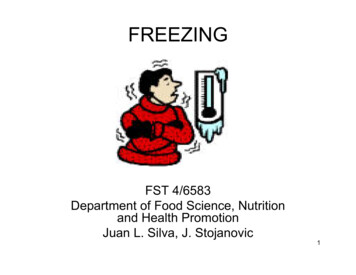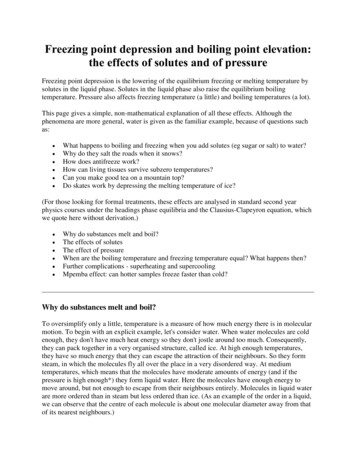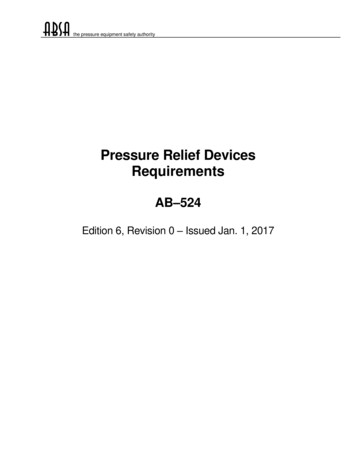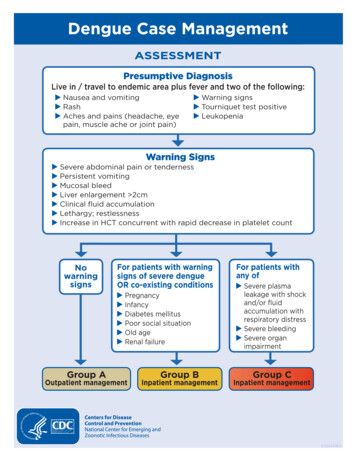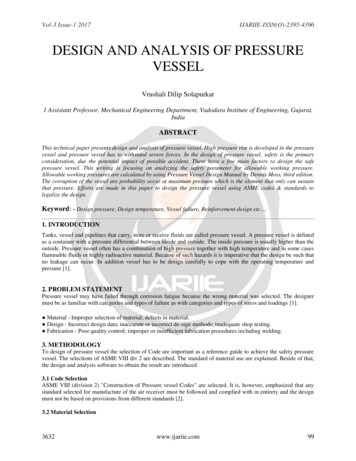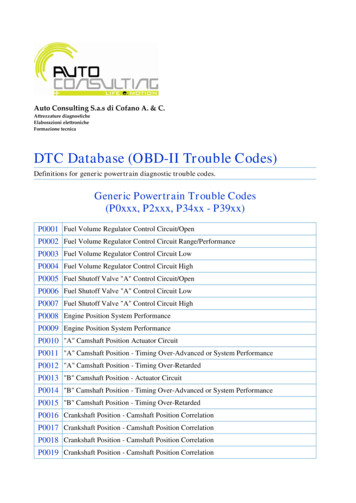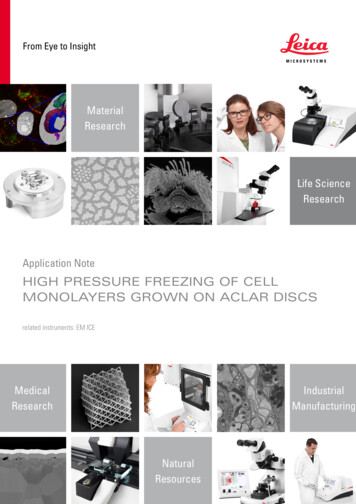
Transcription
From Eye to InsightMaterialResearchLife ScienceResearchApplication NoteHIGH PRESSURE FREEZING OF CELLMONOLAYERS GROWN ON ACLAR DISCSrelated instruments: EM sources
2HIGH PRESSURE FREEZING OF CELLMONOLAYERS GROWN ON ACLAR DISCSApplication Note for High Pressure Freezer EM ICEAndreas Müller1,2,3, Susanne Kretschmar4,5, Thomas Kurth4,5, Michele Solimena1,2,31Molecular Diabetology, University Hospital and Faculty of Medicine Carl Gustav Carus, TU Dresden, Dresden, Germany2Paul Langerhans Institute Dresden (PLID) of the Helmholtz Center Munich at the University Hospital Carl Gustav Carus and Faculty of Medicineof the TU Dresden, Dresden, Germany3German Center for Diabetes Research (DZD e.V.), Neuherberg, Germany4Center for Regenerative Therapies Dresden (CRTD), TU Dresden, Dresden, Germany5Biotechnology Center of the TU Dresden (BIOTEC), Dresden, GermanyAddress correspondence to:andreas.müller8@mailbox.tu-dresden.deAclar discs have been shown to be a good alternative to sapphire discs for high pressure freezing of cell monolayers (Jiménez et al.,2006). Here we describe the use of aclar discs for freezing cells with the EM ICE high pressure freezer.Aclar discs with a diameter of 5 mm were cut out of 50 µm thick aclar sheets with a biopsy punch. The discs were attached to cell cultureplates with a hot wire. In order to prevent floating of the discs melting of the plastic at 3 points on the edge of the discs was sufficient.Prior to seeding of cells the discs were coated with poly-L-ornithin at 37 C over night. Insulinoma INS-1 cells and HeLa cells were thenseeded and cultured for 2-3 days. Prior to high pressure freezing densitiy and appearance of cells were checked under transmitted light.The aclar discs with the cells were frozen with the Leica EM ICE. For cryo-protection 20% BSA dissolved in the respective culture mediumwas used. Aclar discs were quickly immersed in the BSA solution and placed in the 100 µm deep cavity of a 6 mm Type A carrier. After adjusting the volume of the BSA solution a type B carrier with the 300 µm cavity facing to the top was added and the sandwich was frozen.For freeze substitution a cocktail with 1% osmium tetroxide, 0.1% uranyl acetate and 1-5% water was used. Samples were immersedin the cocktail for 5 hours at 90 C followed by raising the temperature to 0 C over the time course of 18 hours in the EM AFS2. Then,samples were washed twice in 100% dry acetone for 1 hour and the temperature was raised to room temperature. EMbed embeddingwas started after one wash with 100% dry acetone for 10 min, followed by three steps of mixtures of EMbed812 and 100% dry acetonewith increasing EMbed812 concentrations for 1 hour each step. After infiltration with 100% EMbed812 overnight and another 4–6 hours inpure EMbed812 samples were transferred to specimen moulds and embedded in EMbed812 at 60 C for 24 hours.The aclar discs were not removed from the carriers, but directly embedded with a drop of EMbed812. After curing the samples weremounted on dummy blocks with a drop of EMbed812. Carriers were then removed by cutting the edges with a razor blade and by applyinga gentle force or hot/cold treatment with liquid nitrogen. After removal of the sample the aclar disc could be seen on the top of the blockwith the cell monolayer facing down. In most of the cases it could simply be peeled off.Serial sections with a thickness of 300 nm were cut with a Leica UC6 ultramicrotome and placed on slot grids with a formvar film. Prior toimaging the sections were post-stained with 2% uranyl acetate in methanol and 1% lead citrate in water. Tilt series ranging from -63 to63 were acquired with a Tecnai F30 electron microscope controlled with SerialEM. Tomograms were reconstructed with IMOD.In most of the cases the samples were frozen without any signs of ice crystal (Figures 1 and 2). In INS-1 cells the ultrastructure of membranesand organelles was well preserved and insulin secretory granules could be seen (Figure 1). In HeLa cells the tomograms allowed to adress thearchitecture of complex multi-vesicular bodies (Figure 2).
LNT Application Note - CELL MONOLAYERS GROWN ON ACLAR DISCS3Fig. 1: A) Single tomographic slice of an INS-1 cell, scale bar: 500 nm B) Magnification of boxed area in A, scale bar: 200 nmM: Mitochondria; MBV: Multi-vesicular body, N: Nucleus, SG: Secretory granuleFig. 2: A) Single tomographic slice of HeLA cell, scale bar: 500 nm B) Magnification of boxed area in a, scale bar: 100 nmReferences:Jiménez, N., Humbel, B.M., van Donselaar, E., Verkleij, A.J., and Burger, K.N.J. (2006). Aclar discs: a versatile substrate for routine high-pressure freezing of mammalian cell monolayers. J. Microsc. 221, 216–223.
4To remove the Aclar from the cell layer the samples need to be Infiltrate end embed in the desired resin, on a dummy block and the carrierneed to be removed. Please see the short video on removing Aclar from the block face after freeze substitution and embedding:
2018 by Leica Microsystems GmbH.Subject to modifications. LEICA and the Leica Logo are registered trademarks of Leica Microsystems IR GmbH.CONNECTWITH US!Leica Mikrosysteme GmbH Vienna, AustriaT 43 1 486 8050-0 F 43 1 486 8050-30www.leica-microsystems.com
Prior to seeding of cells the discs were coated with poly-L-ornithin at 37 C over night. Insulinoma INS-1 cells and HeLa cells were then seeded and cultured for 2-3 days. Prior to high pressure freezing densitiy and appearance of cells were checked under transmitted light. The aclar discs with the cells were frozen with the Leica EM ICE.
